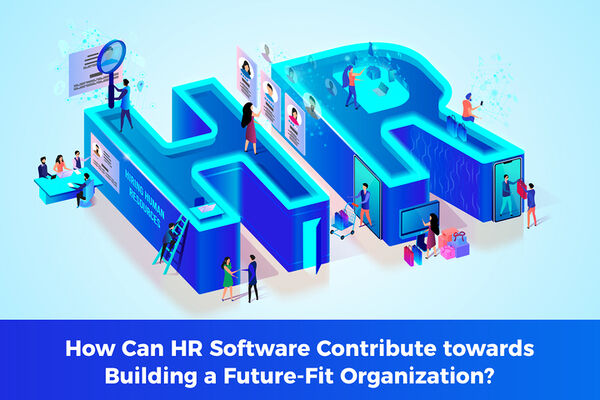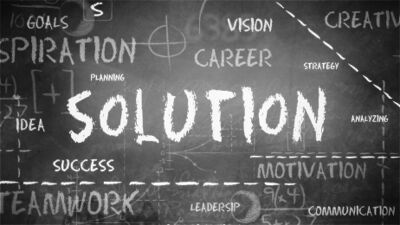How Can HR Software Contribute towards Building a Future-Fit Organization? (Guest blog)
by James Mordy

The pressure to transform with the situation is always there with every organization, big or small. And, it is simple – if you don’t transform, you will see your competitors transform and grow ahead. Reinvention and reimagination are the need of the hour. By seamlessly interconnecting and exchanging information, lowering cost, increasing automation, and smoothly sliding with the societal shift, organizations can well call themselves future-fit and future-ready. This facility will allow them to explore, innovate, and be agile.
“Human-resources leaders can help by focusing on identity, agility, and scalability,” says McKinsey.
So, to start this move, it is necessary to understand;
Who are you?
What do you represent?
How do you function?
How do you foresee?
How do you grow?
This blog will synthesize some of the best practices to seek new approaches and highlight the importance of investing in the next generation HR tools that will enable businesses to assemble them best for the future.
The Role of HR Software in Building Future-ready Organizations:
The pandemic brought drastic changes to the world. WFH became a commonly used abbreviation, connotation for the word zoom changed from increasing/decreasing in size to attending video meetings, organizations adapted remote work and also started monitoring health patterns of employees. Lifestyles changed, economic cycles shifted, and social behavior changed. Human resource departments, too, witnessed colossal shifts and irrevocable changes in their administration, processes, strategies, and context.
Investments in HR technologies increased, which is evident from the fact that the market size of Human capital management software that was $16.7 billion in 2020 is expected to reach $ 24.6 billion by 2026. HR functions are now accomplished by such automated tools. HR's role has evolved, and HR software is now an inevitable companion of HR departments. HRs are able to fill jobs, match talent, centralize their workflow, and create a collaborative and inclusive work environment with the help of HR tools.
Here are some ways that HR software can contribute to building a future-fit organization:
Workforce Management:
Whether HRs have the tools to store relevant knowledge from the aging workforce, who leave or retire from the organizations? Or do they have a mechanism to chart flexible working arrangements, supplement collaborative culture, and forecast workforce requirements? All these questions fall under the workforce management function of HR. From finding a replacement for a short-term skill gap or mitigating generational challenges among workforce members, without efficient workforce planning and management, organizations cannot sustain in the millennial work environments.
HR software eases the complexities involved in workforce management with inbuilt modules for talent acquisition, succession planning, job design, skill management, scheduling, shift management, diversity management, etc. HR software also generates relevant analytical reports around productivity, performance, competencies, etc., to forecast needs for future-fit organizations.
Handling Gig Workers:
Digital innovations and remote work technologies led to the expansion of the mobile workforce, i.e., electronically mediated employees, contingent workers, or the more popular term gig employees. Gig workers, once limited to professions such as drivers, accountants, admins, have extended to roles such as designers, SEO experts, website developers, content writers, etc. Organizations can reap a lot of benefits by hiring gig workers that fill the expertise gap lacking in their current workforce. HR software allows the management to schedule the work-timings, keep separate records, payments, time tracking, and performance assessments for gig workers. HR software also helps organizations in aligning their processes and regulations to fit in the gig workers. Accountability, Classification, and Compliance are other areas where HR software facilitates hassle-free assimilation of gig workers into organizations.
Reinventing Workforce:
Modern workforces need to be dynamic and adaptive. The traditional concept of job profile or job descriptions doesn't apply to the modern work environment. Technological advancements and disruptive innovations are forcing employees to up-skill or adapt to new roles and job profiles frequently. Artificial intelligence is changing the job premises like never before, creating new needs, expectations, and staff structures.
AI-enabled HR software provides human resource departments with tools that help them cope with the new world of work. AI-led automation frees HR from tons of manual tasks and enables them to focus on aligning themselves with the modern workforce demands. HRs can focus on new expectations of employees and important issues such as restructuring of the workforce, employee engagement, and behavior, welfare, etc.
Focusing on Emotional Intelligence:
In a world dominated by AI, automation, and digital tools, modern HRs have changed their focus from qualifications and acquired skill-sets to emotional intelligence quotient. Organizations value emotional IQ that affects a set of professional behavior, including loyalty, dedication, control, and team spirit, more than the intelligence quotient. It's easier for corporates to hone skill-sets in people with the right emotional intelligence. Also, in the age of social media, organizations cannot afford to hire people that are highly skilled but would lose their minds or vent their anger on social platforms. Employees' comments or posts on social media platforms can cause irreversible reputational damage to companies.
Employees react, respond, and share their emotional and social side on social media networks. On social media, employees can display a totally different behavior than the one during their work time. Organizations that need to stay relevant and future-fit have to track employee behavior on social media platforms.
HR software solutions with NLP, machine learning, and social listening features can monitor employee behavior on social media apps. HRs can also use the tool to get relevant analytics about candidates during the hiring process by evaluating their social media profiles. Technologies such as NLP can flag any inappropriate or distasteful post on social media, involvement with illegal groups, and can also throw light on their communication skills, attitude, and way of life. The posts can also help organizations to find stressed employees or employees with depression or anxiety issues, and HRs can take necessary remedial actions.
“Navigating the pandemic's psychological, physical, and economic effects is complicated and evokes a range of different — and often conflicting — emotions. Add social injustice and political unrest, and emotional intelligence is needed more than ever before.”
--Palena Neale (Forbes Councils Member)
Retaining Talent and Engagement:
Technology has changed the way we work. It has improved the quality of life and made many of us more productive than ever before. The world of business is changing at a dynamic pace. As a result, the expectations of employees are also changing. The old model of long-term employment for life is gone. Employees want to keep their options open and explore other opportunities. HR can't afford to operate in silos anymore. Only, recruiting the best talent is not enough. Keeping them engaged and performing at their best requires a smart, future-fit HR strategy.
HR software helps you to make your business future-fit and attract talent by providing flexible and progressive workplace engagement and modern tools for performance management, recruitment, internal company communication, compensation, benefits, etc. HR software helps optimize the ability to attract, retain, and engage employees with the goal of maximizing performance and business needs.
Recruitment and Talent Mapping:
The commercial success of organizations is proportional to their ability to hire and retain skilled and capable employees. The world is witnessing a shift in global macros. Organizations need to source candidates who can drive business outcomes. As digitalization replaces traditional skill-sets, the recruitment process needs modernizing. HRs can redesign their recruitment strategies with HR applications such as recruitment software. Automated screening of resumes, emails, and alerts, and analytics and insights can help HR recruit unicorn candidates.
Talent mapping proactively identifies and engages the right talent for the right role. Efficient talent mapping creates a better work environment for employees, eases their work, unleashes natural adaptiveness, and increases job satisfaction. HR software can be used to compare and evaluate employees' behavior metrics, skill-sets, and experience to make better judgments about their current deployment.
Workforce Scheduling and Mobility:
Modern employees expect more control over their work regimes, demand imperatives for work/life balance, and seek technologies that help them check, record, and even set their schedules on their own. Workplace and worktime flexibilities are the most sought-after employee benefits. HR software lets employers give control of scheduling and mobility to employees with a self-service module designed for employees. Employees can check their leave entitlements, open shift slots, set preferences for shifts, apply for leave, and also change their location with inbuilt mobility tools.
Other Areas Where HR Software Help Organizations Navigate the Future of Work:
1. Evaluating work trends, inconsistencies, and patterns based on HR data analysis
2. Facilitating work from home by efficient allocation of resources, digital collaboration, and support to the HR and the employees
3. Boosting employee morale and job satisfaction with a personalized experience and work engagement (by analyzing behavioral data)
4. Helping HRs to identify cross-department training opportunities to tackle absenteeism and create more collaborative and independent teams
5. Maintaining diversity and inclusion
6. Impart training through integration with augmented and virtual reality technologies
7. Creating and managing learning databases, knowledge panels for future employees
8. Bringing cultural attunement through HR software’s integrations with multi-language chatbots that mitigate linguistic barriers among global teams
9. Eliminating biases through automated performance evaluations with predefined metrics
10. Establishing robust cybersecurity modules to protect valuable employee information
11. Measuring key HR metrics for improving processes
Backed by agile HR teams, organizations can reaffirm their commitment towards customers, stakeholders, investors, and communities. Efficient HR teams propel their organizations towards the attainment of their visions that include equity, inclusion, and diversity in their workforces and sustainable growth. Armed with modern tech tools, HRs can lead their organizations to rethink, reimagine and redefine their processes for the future of the work.
Conclusion:
AI and other digital technologies are intersecting the corporate world like never before. For sustainable growth, it is prudent for modern enterprises to invest in people and technologies. Human Resources (HR) software is a must for any company looking to be on the leading edge of tomorrow’s workforce. Aided by the actionable insights, predictive analytics, and vast integrations of HR software, organizations can bring qualified people together to eventuate work models of the future.
_________________________________________________________________________
Author Bio:
James Mordy is a content writer with the IT research firm GoodFirms. An avid reader, a solo traveler, and a tech geek, he loves to read and write about innovations that transform the business world. His areas of interest include the latest technologies, software products, artificial intelligence, and machine learning.


